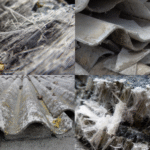Have you ever gazed at a rainbow and wondered about the magic behind it? Or perhaps you’ve marveled at how light dances through a glass prism, casting vibrant colors onto your walls. Welcome to the enchanting world of prizmatem! These fascinating objects are not just tools for scientific experiments; they open up a realm filled with color, light, and wonder. Whether you’re an aspiring scientist or simply curious about the beauty around you, this guide will take you on an illuminating journey into prisms—unpacking their science, history, and even some fun DIY projects along the way. Get ready to explore how these remarkable shapes can transform ordinary light into extraordinary displays of color!
What are prizmatem and How Do They Work?
Prizmatem, or prisms, are transparent optical elements that refract light. Made from materials like glass or acrylic, they can take on various shapes—most commonly triangular.
When light enters a prism, it slows down and bends due to a change in medium. This bending is called refraction. Each color within white light travels at slightly different speeds and angles, which results in the stunning spectrum we see.
As the light exits the prism, it spreads out into its component colors: red, orange, yellow, green, blue, indigo, and violet. This phenomenon is what creates rainbows when sunlight interacts with moisture in the atmosphere.
The unique design of each prism influences how dramatically this dispersion occurs. Some prisms provide sharper images while others produce softer transitions between colors. Understanding these mechanics allows us to appreciate not only their beauty but also their scientific significance.
The Science Behind Light and Color
Light is a fascinating phenomenon. It travels in waves, and its behavior can reveal much about the world around us.
When light hits an object, it can be absorbed, reflected, or transmitted. The colors we see depend on which wavelengths are bounced back to our eyes. For instance, a red apple reflects red wavelengths while absorbing others.
The visible spectrum contains seven colors: red, orange, yellow, green, blue, indigo, and violet. This spectrum forms when white light passes through prisms.
Prisms separate these colors due to refraction—a bending of light as it enters a new medium. Each color bends at different angles because of varying wavelengths.
This intricate dance of light leads to brilliant displays like rainbows or simply illuminating our everyday lives with vibrant hues.
The History of prizmatem
Prizmatem has a fascinating history that traces back to ancient civilizations. The earliest records date to the Greeks, who pondered light and its properties.
In the 17th century, Sir Isaac Newton made significant strides by conducting experiments with prisms. His work revealed how white light could be split into a spectrum of colors. This groundbreaking discovery laid the foundation for modern optics.
Throughout the years, prisms have evolved in design and application. Scientists utilized them in telescopes and microscopes, enhancing our understanding of both distant stars and tiny organisms.
The beauty of prisms captured artists’ attention too. Painters like J.M.W. Turner embraced their colorful effects in artwork, bridging science and art seamlessly.
As technology advanced, so did our use of prizmatem in various fields—from telecommunications to architecture—showing just how versatile they can be.
Types of Prisms and Their Uses
Prisms come in various shapes and sizes, each serving unique purposes. The most common type is the triangular prism, which refracts light to create stunning rainbows. These are often used in classrooms to demonstrate light behavior.
Then there are rectangular prisms. They provide efficient beam splitting and are widely utilized in cameras and projectors for precise image rendering.
Another fascinating variant is the pentagonal prism, known for its ability to produce a 180-degree turn of light rays. This feature makes it valuable in optical instruments.
We have dispersive prisms designed specifically to separate wavelengths of light into their component colors. Scientists frequently use these prisms in spectrometry for analyzing materials.
Each prism type plays a pivotal role across education, photography, science, and art, showcasing the versatility of these captivating optical tools.
How to Make Your Own Prism at Home
Creating your own prism at home can be a fun and educational project. All you need is a clear plastic bottle, some water, and a flashlight.
Start by filling the bottle with water. Leave about an inch of space at the top to prevent spills during experiments. Seal it tightly to avoid any leaks.
Next, take your flashlight and shine it through one side of the filled bottle. Adjust the angle slightly until you see light refracting into various colors on a nearby surface.
If you’re feeling adventurous, add small amounts of sugar or food coloring to observe how they affect light dispersion. This simple experiment beautifully demonstrates how prisms work in breaking down white light into its colorful spectrum.
Experiment with different angles and distances for varied effects. You’ll discover just how magical everyday objects can become when combined with creativity!
Fun Experiments with prizmatem and Light
Prizmatem offer endless opportunities for fun experiments. One simple experiment involves using a flashlight and a glass prism. Shine the light through the prism and watch as it transforms into a spectrum of colors on your wall.
Another exciting activity is creating rainbow art. Place white paper under sunlight, then hold the prism at an angle to project rainbows across the surface. Kids love watching how their drawings come alive with vibrant colors.
For those feeling adventurous, try mixing colored water in clear containers. By placing prisms at strategic angles, you can create unique color combinations that dance across surfaces.
Explore refraction by dipping different objects—like straws or pencils—in water while observing them through your glass prism. The bending effect will surprise you! Each experiment reveals something new about light’s fascinating behavior and its relationship with prismatem.
Common Misconceptions about prizmatem Debunked
Many people think prisms only create rainbows. While they do scatter light into a spectrum, their capabilities extend far beyond visual effects.
Another misconception is that all prisms must be made of glass. In reality, various materials such as acrylic or even certain crystals can also function effectively as prisms.
Some believe prisms work best with sunlight. However, artificial light sources can produce similar effects. You just need the right angle and intensity.
There’s also a myth that using multiple prisms will create more colors. This isn’t true; each prism simply refracts light in its own unique way without adding new hues to the mix.
Many assume that prismatem are complex scientific instruments suited only for labs. The truth? They’re accessible tools anyone can use at home for exploration and fun activities!
Conclusion: Exploring the Beauty and Magic of prizmatem
The world of prisms is both fascinating and enchanting. Prizmatem, with their ability to bend light and create vibrant rainbows, serve as a reminder of the beauty in science. They capture our imagination and invite exploration.
By understanding how prisms work, we connect with fundamental concepts of light and color that shape our perception of the world around us. The history behind these optical wonders enriches our appreciation for their role in scientific discoveries.
Creating your own prism at home opens doors to hands-on learning. Simple experiments can spark curiosity about light’s behavior while showcasing mesmerizing effects. With a little creativity, anyone can delve into this colorful realm.
Despite common misconceptions surrounding prizmatem, it’s clear they are not just tools for scientists but also instruments of inspiration for artists and dreamers alike. Their magic lies not only in the rainbows they produce but also in their power to captivate minds across generations.
Exploring prizmatem is an invitation to discover nature’s intricate dance between light and color—a journey worth taking time after time again.

















